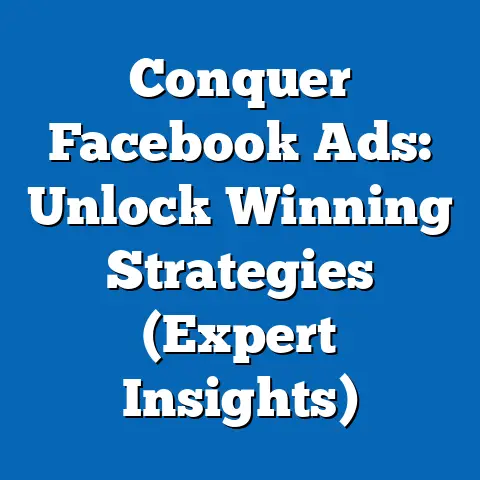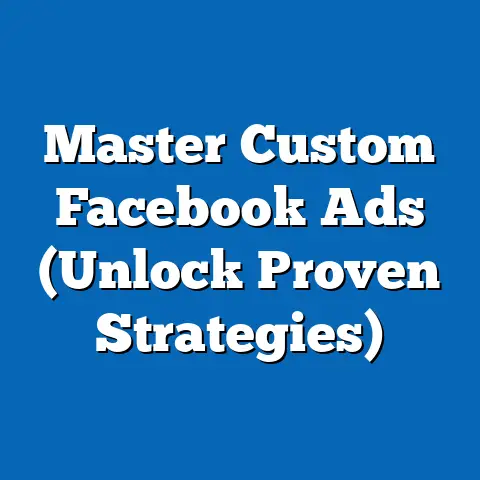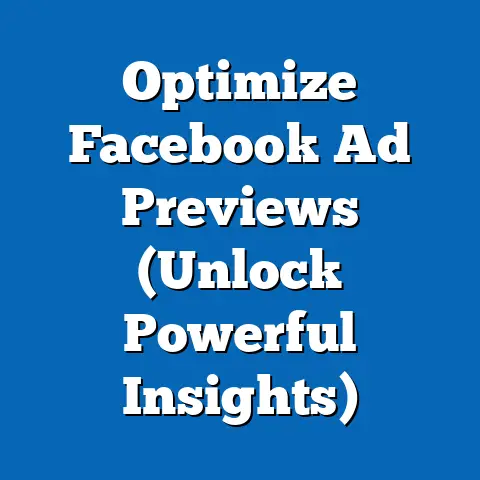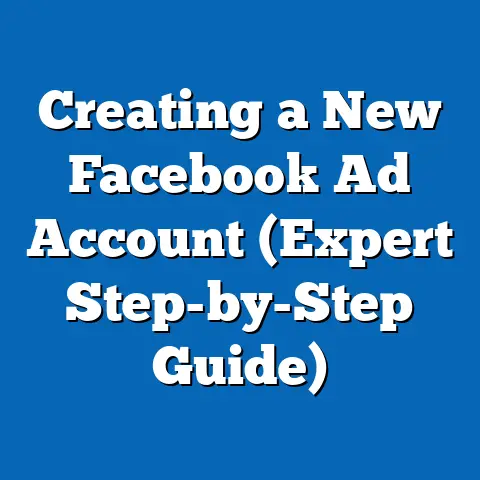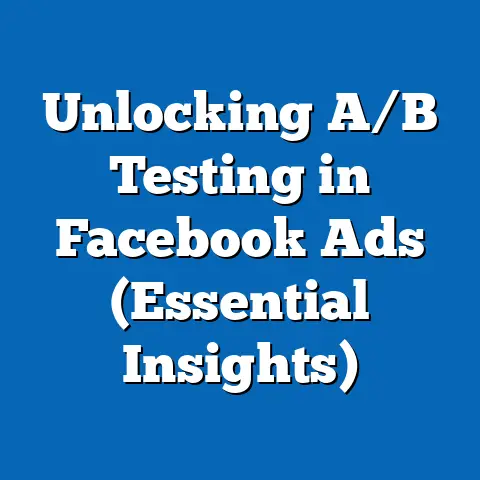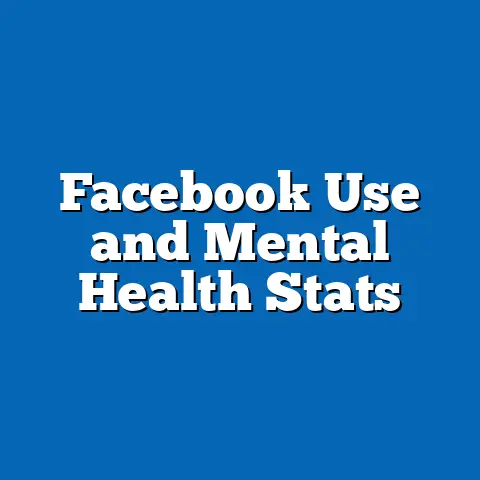Master Facebook Content Ads (Proven Strategies Revealed)
Did you know that over 3 billion people actively use Facebook every month, yet 98% of your ads might go unnoticed if not strategically crafted? It’s a sobering thought, isn’t it? All that potential reach, just slipping through your fingers because your ads aren’t resonating. That’s why mastering Facebook Content Ads is absolutely crucial. It’s not enough to just throw money at the platform; you need to create ads that truly connect with your audience. In this guide, I’ll walk you through proven strategies to elevate your advertising game and make your content ads stand out in the crowded Facebook landscape. I’ll be sharing my own experiences, insights, and actionable tips to help you transform your campaigns and achieve real results.
Understanding Facebook Content Ads
So, what exactly are Facebook Content Ads? They’re not your typical, in-your-face sales pitches. Instead, they focus on delivering valuable, engaging, and informative content to your target audience. Think blog posts, videos, infographics, guides, webinars – anything that provides real value to the user.
The key difference between content ads and traditional ads lies in their purpose. Traditional ads primarily aim for direct sales or lead generation. Content ads, on the other hand, aim to build brand awareness, establish thought leadership, nurture relationships, and ultimately, drive conversions through a more subtle and organic approach. It’s about earning attention, not demanding it.
In today’s digital age, consumers are bombarded with advertisements from every direction. This constant barrage has led to “ad fatigue,” where people become increasingly resistant to traditional advertising methods. That’s where content ads come in. By offering valuable and engaging content, you can break through the noise and capture your audience’s attention in a way that feels less intrusive and more helpful.
The Significance of Engaging Content
Amidst the endless scroll of cat videos and political debates, your content needs to be exceptional to grab attention. Imagine your Facebook feed as a bustling marketplace. Everyone is shouting for attention, trying to sell you something. To stand out, you can’t just yell louder; you need to offer something truly valuable and unique.
Engaging content is the cornerstone of successful content ads. It’s what makes people stop scrolling, click through, and ultimately, remember your brand. It’s about creating content that resonates with your audience on an emotional level, solves their problems, and provides them with genuine value. Without engaging content, your ads are just another drop in the digital ocean.
Takeaway: Facebook Content Ads are about providing value first, selling second. Focus on creating engaging content that resonates with your target audience to break through the noise and build lasting relationships.
The Psychology Behind Content Ads
Why do some content ads work wonders, while others fall flat? The answer lies in understanding the psychology behind what makes content ads effective. It’s not just about pretty pictures and clever copy; it’s about tapping into the emotional drivers that motivate people to take action.
Psychological Triggers
Several psychological triggers can significantly enhance the effectiveness of your content ads. Here are a few key ones:
- Storytelling: Humans are wired for stories. We connect with narratives on a deeper level than we do with facts and figures. Crafting a compelling story around your brand or product can create a powerful emotional connection with your audience. I’ve seen countless campaigns succeed simply because they told a captivating story that resonated with viewers.
- Emotional Appeal: Emotions drive decisions. Whether it’s joy, fear, curiosity, or empathy, tapping into the right emotion can significantly boost engagement. Consider what emotions your target audience is likely to experience in relation to your product or service, and tailor your content accordingly.
- Social Proof: People are more likely to trust something if they see that others have already had a positive experience with it. Testimonials, reviews, and case studies provide powerful social proof that can build credibility and increase conversions.
- Scarcity: The fear of missing out (FOMO) is a powerful motivator. Highlighting the limited availability of a product or service can create a sense of urgency and encourage people to take action.
- Authority: People are more likely to trust information that comes from a credible source. Establishing yourself as an authority in your niche can significantly boost the effectiveness of your content ads.
Understanding Your Audience
Understanding your audience’s needs, preferences, and pain points is paramount. You can’t create effective content ads if you don’t know who you’re talking to.
Start by conducting thorough audience research. Use Facebook Audience Insights to gather data on your target audience’s demographics, interests, behaviors, and connections. Pay attention to what they’re talking about, what they’re interested in, and what challenges they’re facing.
Once you have a solid understanding of your audience, you can tailor your content to address their specific needs and preferences. This means creating content that is relevant, valuable, and engaging to them.
Building Trust
In today’s world of fake news and misinformation, building trust is more important than ever. People are increasingly skeptical of advertising, so you need to earn their trust by providing them with valuable and transparent content.
Be honest and authentic in your messaging. Avoid making exaggerated claims or misleading promises. Focus on providing real value to your audience, and they will be more likely to trust your brand. Share your expertise, be transparent about your processes, and always prioritize your audience’s needs. I have found, through many years, that authenticity is the key to building a loyal customer base.
Takeaway: Understanding the psychology behind content ads, including emotional triggers and audience needs, is crucial for creating campaigns that resonate with your target audience and build trust.
Proven Strategies for Creating High-Performing Facebook Content Ads
Now that we’ve covered the fundamentals, let’s dive into the nitty-gritty of creating high-performing Facebook Content Ads. These strategies are based on my own experiences and insights, as well as best practices from industry experts.
Strategy 1: Crafting Compelling Visuals
In the visually-driven world of Facebook, your visuals are often the first thing people see. That’s why it’s crucial to invest in high-quality, eye-catching images and videos that grab attention and communicate your message effectively.
- Use High-Quality Images: Avoid blurry, pixelated, or poorly lit images. Invest in professional photography or use high-quality stock photos that are relevant to your content.
- Create Engaging Videos: Video is incredibly powerful on Facebook. Create short, engaging videos that tell a story, demonstrate your product, or provide valuable information.
- Optimize for Mobile: Most Facebook users access the platform on their mobile devices. Make sure your visuals are optimized for mobile viewing, with clear text and easy-to-understand graphics.
- Consider Branding: Incorporate your brand colors, logo, and fonts into your visuals to create a consistent brand identity.
Example: A travel company might use stunning photos of exotic destinations or short videos showcasing travel experiences to entice users to click through to their website.
Strategy 2: Writing Captivating Copy
Your ad copy is just as important as your visuals. It’s what tells your audience what your content is about and why they should care.
- Write Clear and Concise Headlines: Your headline is the first thing people will read, so make it count. Use clear, concise language that grabs attention and communicates the value of your content.
- Use Persuasive Language: Use persuasive language that appeals to your audience’s emotions and motivates them to take action.
- Highlight the Benefits: Focus on the benefits of your content, rather than just the features. Tell your audience what they will gain by clicking through to your website.
- Include a Clear Call-to-Action (CTA): Tell your audience exactly what you want them to do. Use clear, concise CTAs like “Learn More,” “Download Now,” or “Sign Up Today.”
- Keep it Short and Sweet: People have short attention spans on Facebook, so keep your ad copy concise and to the point.
Example: Instead of saying “Download our free e-book,” try “Unlock the secrets to successful Facebook advertising with our free e-book!”
Strategy 3: Targeting the Right Audience
Even the best content ad will fail if it’s not shown to the right people. Facebook’s targeting options are incredibly powerful, allowing you to reach specific demographics, interests, behaviors, and connections.
- Define Your Target Audience: Start by defining your ideal customer. Who are they? What are their interests? What are their pain points?
- Use Facebook’s Targeting Options: Use Facebook’s targeting options to reach your ideal customer. You can target by demographics, interests, behaviors, connections, and more.
- Create Custom Audiences: Create custom audiences based on your existing customer data, such as email lists or website visitors.
- Use Lookalike Audiences: Use lookalike audiences to reach people who are similar to your existing customers.
- Experiment with Different Audiences: Don’t be afraid to experiment with different audiences to see what works best.
Example: If you’re selling yoga mats, you might target people who are interested in yoga, fitness, or wellness.
Strategy 4: Leveraging User-Generated Content
User-generated content (UGC) is any content created by your customers or fans, such as testimonials, reviews, photos, and videos. UGC is incredibly powerful because it provides social proof and builds trust.
- Encourage Customers to Share: Encourage your customers to share their experiences with your product or service on social media.
- Run Contests and Giveaways: Run contests and giveaways that encourage users to create and share content.
- Feature UGC in Your Ads: Feature UGC in your ads to build credibility and increase engagement.
- Ask for Testimonials: Ask satisfied customers to provide testimonials that you can use in your ads.
Example: A clothing brand might feature photos of customers wearing their clothes in their Facebook ads.
Strategy 5: A/B Testing for Optimization
A/B testing, also known as split testing, is the process of comparing two versions of an ad to see which one performs better. A/B testing is essential for optimizing your Facebook Content Ads and maximizing your ROI.
- Test Different Elements: Test different elements of your ads, such as headlines, visuals, copy, and CTAs.
- Create Two Versions of Your Ad: Create two versions of your ad, with one element changed.
- Run the Ads Simultaneously: Run the ads simultaneously to the same audience.
- Track the Results: Track the results to see which ad performs better.
- Implement the Winning Version: Implement the winning version of your ad and continue testing to further optimize your campaigns.
Example: You might test two different headlines to see which one generates more clicks.
Takeaway: By implementing these proven strategies, including crafting compelling visuals, writing captivating copy, targeting the right audience, leveraging user-generated content, and A/B testing for optimization, you can significantly improve the performance of your Facebook Content Ads.
Analyzing and Measuring Success
Creating great content ads is only half the battle. You also need to track your results and analyze your data to see what’s working and what’s not. This will allow you to optimize your campaigns and maximize your ROI.
Key Performance Indicators (KPIs)
Here are some key performance indicators (KPIs) to track the effectiveness of your Facebook Content Ads:
- Reach: The number of unique people who saw your ad.
- Impressions: The number of times your ad was displayed.
- Click-Through Rate (CTR): The percentage of people who saw your ad and clicked on it.
- Cost Per Click (CPC): The average cost you paid for each click on your ad.
- Conversion Rate: The percentage of people who clicked on your ad and completed a desired action, such as making a purchase or signing up for a newsletter.
- Cost Per Conversion (CPC): The average cost you paid for each conversion.
- Engagement: The number of likes, comments, and shares your ad received.
- Website Traffic: The amount of traffic your ad drove to your website.
Using Facebook Insights
Facebook Insights provides a wealth of data about your ad performance. You can use Facebook Insights to track your KPIs, analyze your audience demographics, and see how people are interacting with your ads.
To access Facebook Insights, go to your Facebook Page and click on the “Insights” tab. From there, you can view a variety of reports and dashboards that provide valuable data about your ad performance.
Interpreting Data and Making Informed Decisions
Interpreting data can be daunting, but it’s essential for making informed decisions about your campaigns. Look for trends and patterns in your data to identify what’s working and what’s not.
For example, if you see that your CTR is low, you might need to improve your ad copy or visuals. If you see that your CPC is high, you might need to refine your targeting options. If you see that your conversion rate is low, you might need to improve your landing page or offer.
Don’t be afraid to experiment and try new things. The key is to continuously track your results, analyze your data, and make informed decisions based on what you learn.
Takeaway: Analyzing and measuring the success of your Facebook Content Ads is crucial for optimizing your campaigns and maximizing your ROI. Use Facebook Insights to track your KPIs, interpret your data, and make informed decisions about your future campaigns.
Case Studies of Successful Facebook Content Ads
Let’s take a look at some real-world examples of brands that have successfully utilized Facebook Content Ads. By analyzing their strategies and results, we can gain valuable insights that we can apply to our own campaigns.
Case Study 1: HubSpot
HubSpot, a leading marketing and sales software company, is a master of content marketing. They regularly use Facebook Content Ads to promote their blog posts, e-books, and other valuable resources.
Strategy: HubSpot focuses on creating high-quality, informative content that addresses the needs and pain points of their target audience. They use compelling visuals and persuasive ad copy to entice users to click through to their website. They also use Facebook’s targeting options to reach specific demographics and interests.
Results: HubSpot has seen significant increases in website traffic, lead generation, and brand awareness as a result of their Facebook Content Ads.
Key Takeaways:
- Focus on creating high-quality, informative content.
- Use compelling visuals and persuasive ad copy.
- Utilize Facebook’s targeting options to reach your ideal customer.
Case Study 2: Dollar Shave Club
Dollar Shave Club, a subscription service for razors and grooming products, is known for their humorous and engaging marketing campaigns. They have successfully used Facebook Content Ads to promote their brand and acquire new customers.
Strategy: Dollar Shave Club creates entertaining and shareable videos that showcase their products and brand personality. They use Facebook’s targeting options to reach men who are interested in grooming and personal care. They also run contests and giveaways to encourage user engagement.
Results: Dollar Shave Club has seen significant increases in brand awareness, website traffic, and customer acquisition as a result of their Facebook Content Ads.
Key Takeaways:
- Create entertaining and shareable content.
- Showcase your brand personality.
- Run contests and giveaways to encourage user engagement.
Case Study 3: Airbnb
Airbnb, a global platform for booking accommodations, uses Facebook Content Ads to promote their listings and attract new guests and hosts.
Strategy: Airbnb uses stunning photos of unique properties and travel experiences to entice users to book their next vacation. They use Facebook’s targeting options to reach people who are interested in travel and adventure. They also use retargeting to reach people who have previously visited their website.
Results: Airbnb has seen significant increases in bookings, website traffic, and brand awareness as a result of their Facebook Content Ads.
Key Takeaways:
- Use stunning photos and videos to showcase your products or services.
- Target people who are interested in your niche.
- Use retargeting to reach people who have previously visited your website.
Takeaway: By studying these case studies, you can gain valuable insights into what works and what doesn’t when it comes to Facebook Content Ads. Remember to adapt these strategies to your own brand and target audience.
Conclusion
Mastering Facebook Content Ads is essential for driving engagement, building brand awareness, and ultimately, increasing conversions. By understanding the psychology behind content ads, implementing proven strategies, analyzing your results, and learning from successful case studies, you can elevate your advertising game and achieve real results on one of the world’s largest social media platforms.
Don’t be afraid to experiment, try new things, and continuously optimize your campaigns. The key is to stay informed, stay adaptable, and always prioritize your audience’s needs.
Now, it’s your turn!
Call-to-Action
Share your experiences with Facebook Content Ads in the comments below. What strategies have worked for you? What challenges have you faced? Or, if you’re just getting started, start experimenting with the strategies outlined in this article and let me know how it goes. Together, we can elevate our advertising game and unlock the full potential of Facebook Content Ads!

